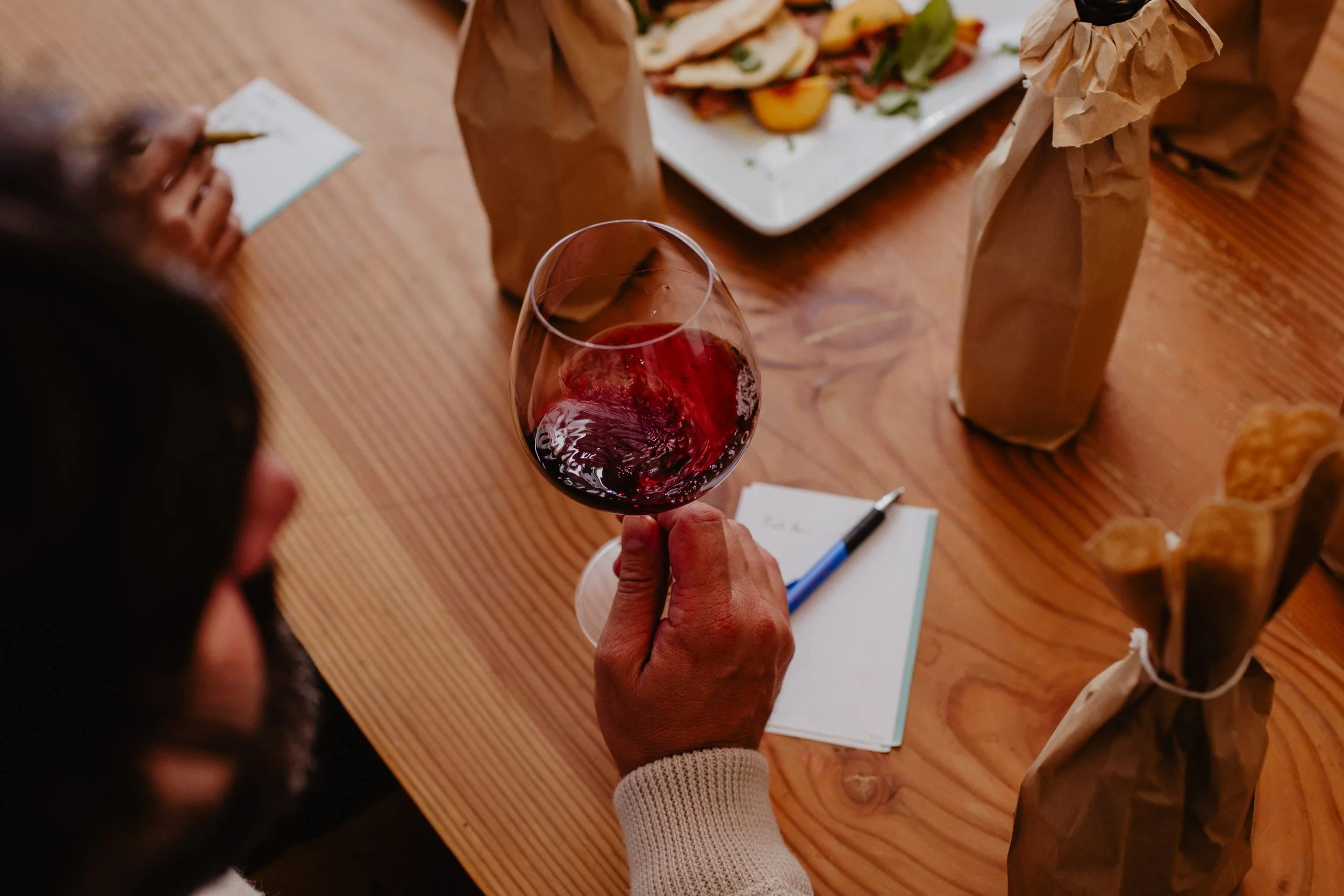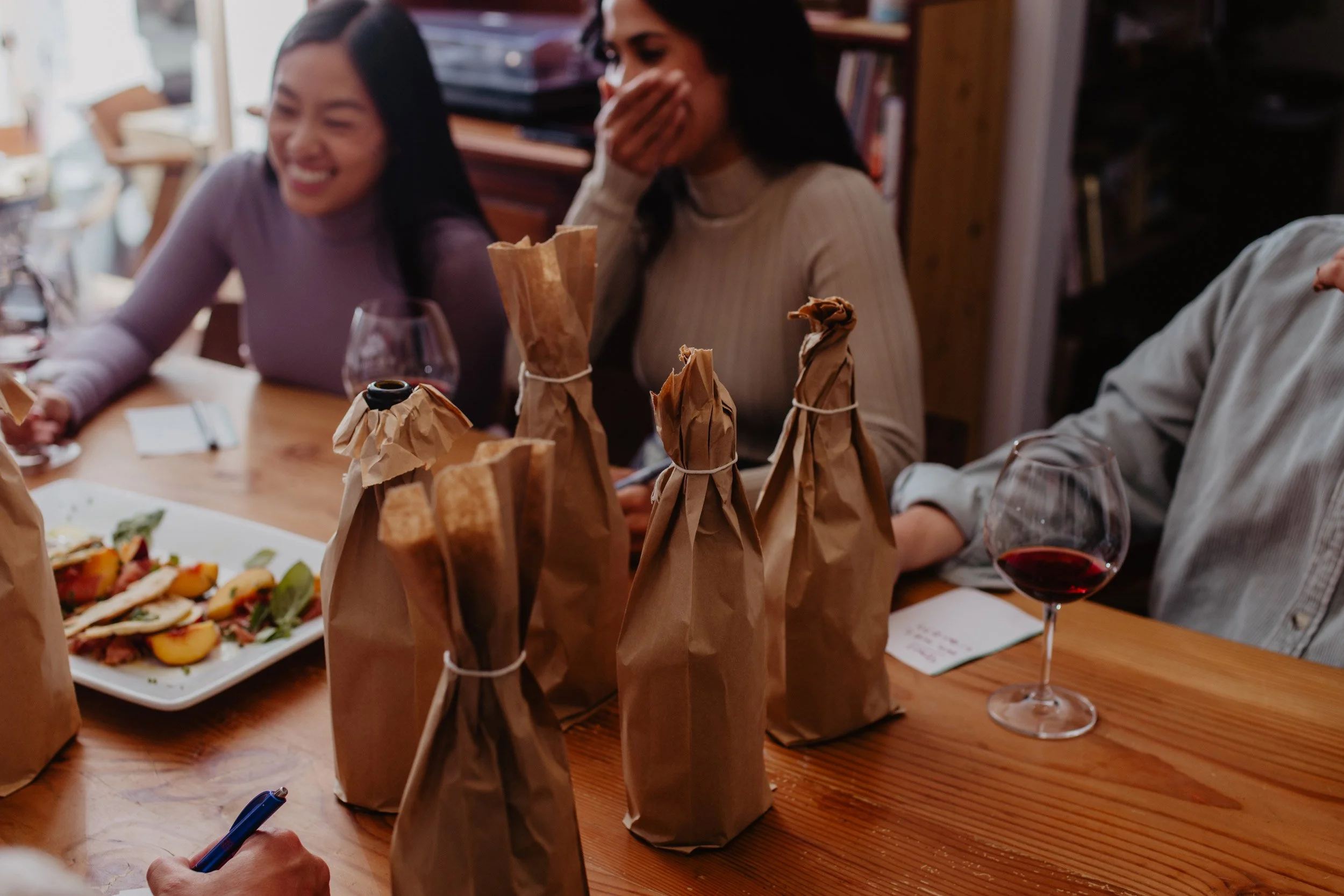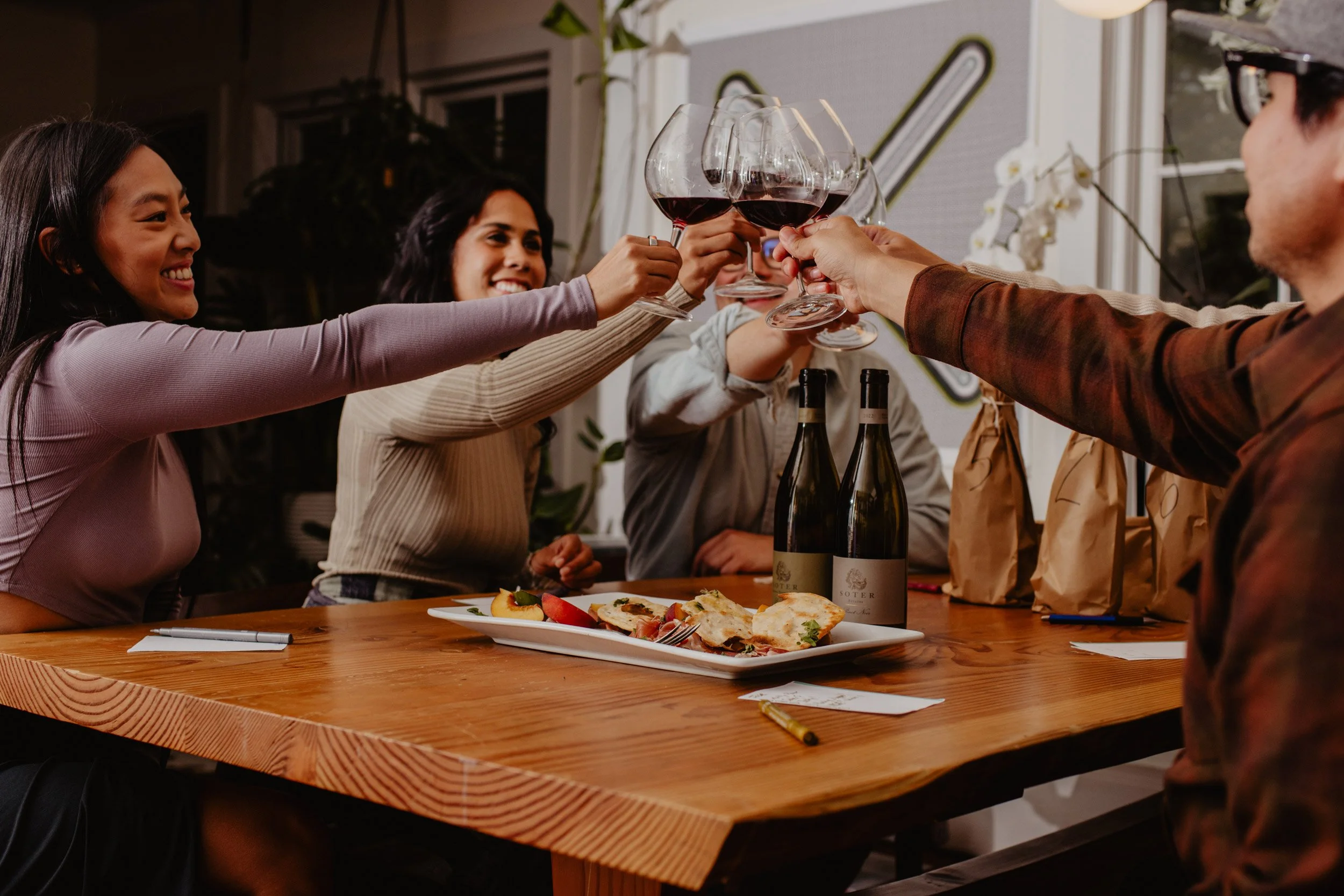Crafting Memories
Hosting a blind wine tasting can be an engaging and educational way to explore wines without preconceptions. It levels the playing field, putting esteemed wine nerds on even footing with excited neophytes. The thrill of guessing varietals, regions, or even vintages adds an element of surprise that keeps everyone on their toes and fosters lively discussions. Plus, it’s a fantastic opportunity to discover hidden gems you might not have chosen otherwise.
If you’d prefer to skip the fuss of planning and organizing, let us come to your home and host a tasting for you! Our knowledgeable team will guide you through an unforgettable experience tailored to your preferences, ensuring that you and your guests can relax and enjoy the moment while discovering new favorites together. Embrace the joy of wine in a delightful setting—after all, great memories are best made over shared bottles. Reach out to learn more about in-home tastings HERE.
Wine has a magical way of bringing people together, and hosting a tasting can deepen those connections while expanding everyone’s palate. So gather your friends, pop some corks, and let the exploration begin! Here’s a step-by-step guide to help you plan a successful blind wine tasting:
1. Choose a Theme
Variety: Focus on a single grape varietal, like Pinot Noir or Chardonnay, from different regions or producers.
Region: Select wines from the same region but different producers, we of course love Oregon ;).
Price Point: Compare budget wines to higher-end options.
Old World vs. New World: Compare wines from traditional European regions (Old World) with wines from newer regions (New World).
2. Select the Wines
Aim for 4-6 wines. Too many can overwhelm the palate.
Vary the selection to keep things interesting. You could mix different price ranges, regions, or styles within your chosen theme.
3. Preparation
Hide the Bottles: Wrap each bottle in foil or use wine bags to conceal the label. Alternatively, pour the wine into identical decanters or carafes. We love a bag that can be recycled or if you’re going to do this often, reused - like these or these.
Label the Bottles: Number or label each bottle to keep track of which wine is which.
Wine Glasses: Provide each guest with a separate glass for each wine to allow for easy comparison. There are lots of options out there depending on your budget - here are a few of our favorites for everyday, splurge, and ‘budget, who?’.
4. Set the Table
Note Sheets: Prepare scorecards for guests to jot down notes about aroma, taste, body, acidity, and finish.
Palate Cleansers: Offer neutral foods like crackers or bread to cleanse the palate between tastings.
Water: Provide water for guests to drink between wines. We recommend not using water to rinse your glass as it can alter the pH of the wine. If you need to rinse, simply use the next wine you’ll be tasting and give a little swish.
5. Tasting Order
Typically, you start with lighter wines and move to fuller-bodied or more intense wines.
6. Facilitate the Tasting
Encourage Guests to Observe: Have guests examine the wine’s color and clarity.
Smell First: Let everyone swirl their wine in the glass and smell it before tasting. Ask them to note the aromas.
Taste: Guide them to think about the wine’s balance, structure, and flavors.
Compare Notes: At the end of each wine, discuss impressions without revealing the identity of the wine.
7. Reveal the Wines
After tasting all the wines, reveal the labels and share any stories or interesting facts about each wine, region, or producer.
8. Optional: Include a Fun Twist
You can include a wine that doesn’t fit the theme or one that’s less expected (like a more unusual varietal) to surprise your guests.
9. Scoring & Prizes (Optional)
Let guests rank the wines and consider offering a small prize for the one who guesses the most correctly or scores the highest.
Now you have all the tools to recreate this at home. Good luck and happy tasting!
If a blind tasting isn’t your bag, we’ve compiled a few other wine-themed games:
1. Wine Aroma Challenge
Use a wine aroma kit or make your own by preparing small jars with common wine aromas (blackberry, vanilla, grass, etc.). Blindfold guests and have them smell the jars, guessing the aromas. The person who identifies the most correctly wins.
2. Two Truths and a Lie (Wine Edition)
For each wine, present three statements: two true and one false. For example:
“This wine is from Napa Valley,”
“It’s a blend of three grape varieties,”
“It was aged in stainless steel barrels.” Guests guess which statement is the lie.
3. Guess the Price
After tasting a wine, have guests guess its price. You can include wines from a wide range of prices. The person who gets closest wins. It’s fun to see how perception changes based on taste alone!
These games can add a lighthearted and interactive element to any wine gathering. Depending on the crowd, you can tailor the games to be more educational or purely for fun!




